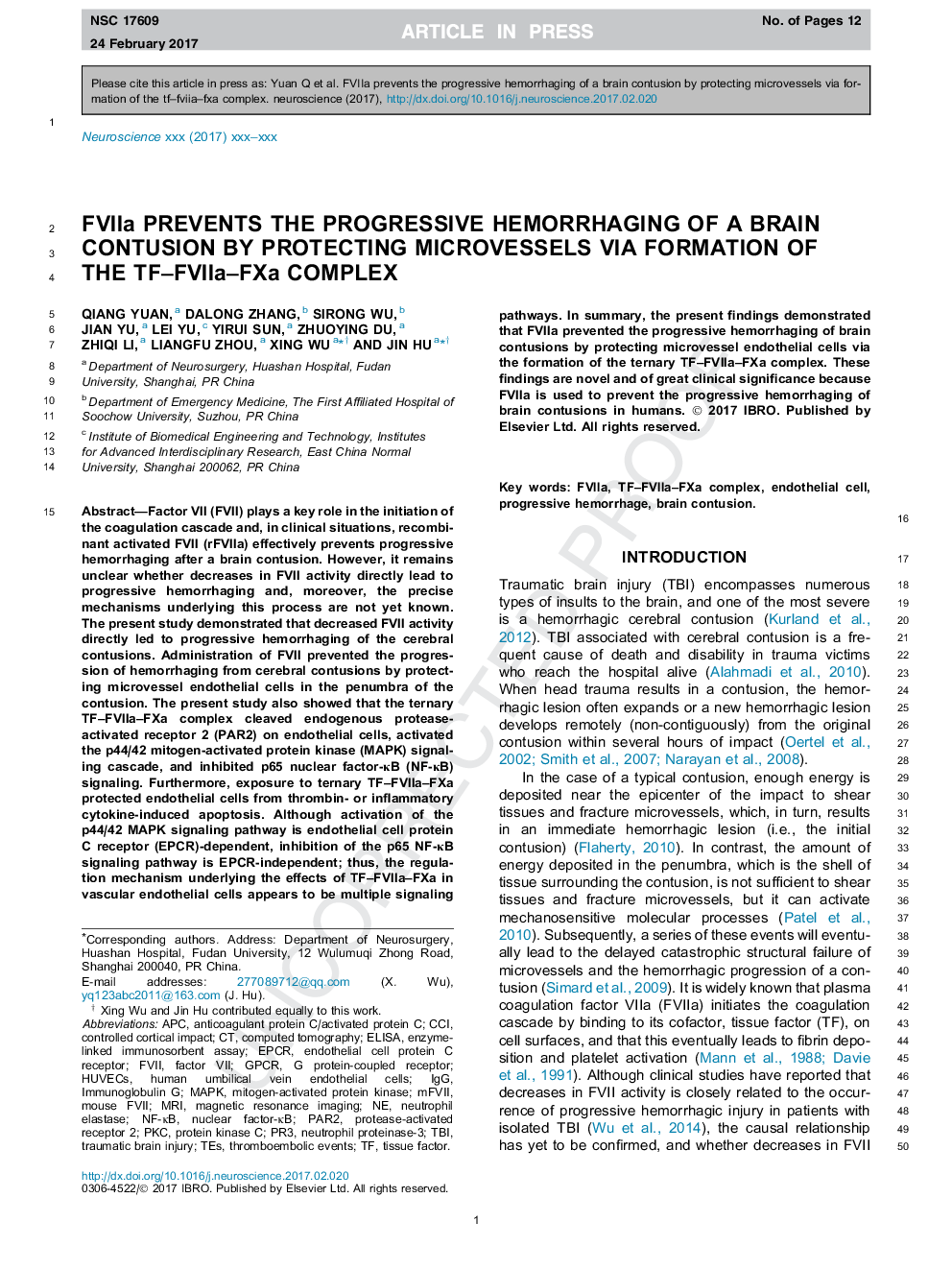| Article ID | Journal | Published Year | Pages | File Type |
|---|---|---|---|---|
| 5737795 | Neuroscience | 2017 | 12 Pages |
Abstract
Factor VII (FVII) plays a key role in the initiation of the coagulation cascade and, in clinical situations, recombinant human activated FVII (rFVIIa) effectively prevents progressive hemorrhaging after a brain contusion. However, it remains unclear whether decreases in FVII activity directly lead to progressive hemorrhaging and, moreover, the precise mechanisms underlying this process are not yet known. The present study demonstrated that decreased FVII activity directly led to progressive hemorrhaging of the cerebral contusions. Administration of FVII prevented the progression of hemorrhaging from cerebral contusions by protecting microvessel endothelial cells in the penumbra of the contusion. The present study also showed that the ternary TF-FVIIa-FXa complex cleaved endogenous protease-activated receptor 2 (PAR2) on endothelial cells, activated the p44/42 mitogen-activated protein kinase (MAPK) signaling cascade, and inhibited p65 nuclear factor-κB (NF-κB) signaling. Furthermore, exposure to ternary TF-FVIIa-FXa protected endothelial cells from thrombin- or inflammatory cytokine-induced apoptosis. Although activation of the p44/42 MAPK signaling pathway is endothelial cell protein C receptor (EPCR)-dependent, inhibition of the p65 NF-κB signaling pathway is EPCR-independent; thus, the regulation mechanism underlying the effects of TF-FVIIa-FXa in vascular endothelial cells appears to be multiple signaling pathways. In summary, the present findings demonstrated that FVIIa prevented the progressive hemorrhaging of brain contusions by protecting microvessel endothelial cells via the formation of the ternary TF-FVIIa-FXa complex. These findings are novel and of great clinical significance because FVIIa is used to prevent the progressive hemorrhaging of brain contusions in humans.
Keywords
CCIendothelial cell protein C receptorTBIFVIIaPR3FVIIPAR2EPCRPKCGPCRAPCHUVECSNF-κBTESIgGMAPKTraumatic brain injuryneutrophil elastaseMRIimmunoglobulin GELISAEnzyme-linked immunosorbent assayMagnetic resonance imagingcomputed tomographythromboembolic eventsEndothelial cellHuman umbilical vein endothelial cellsTissue factorFactor VIInuclear factor-κBProtein kinase Cmitogen-activated protein kinasecontrolled cortical impactBrain contusionprotease-activated receptor 2G protein-coupled receptor
Related Topics
Life Sciences
Neuroscience
Neuroscience (General)
Authors
Qiang Yuan, Dalong Zhang, Sirong Wu, Jian Yu, Lei Yu, Yirui Sun, Zhuoying Du, Zhiqi Li, Liangfu Zhou, Xing Wu, Jin Hu,
